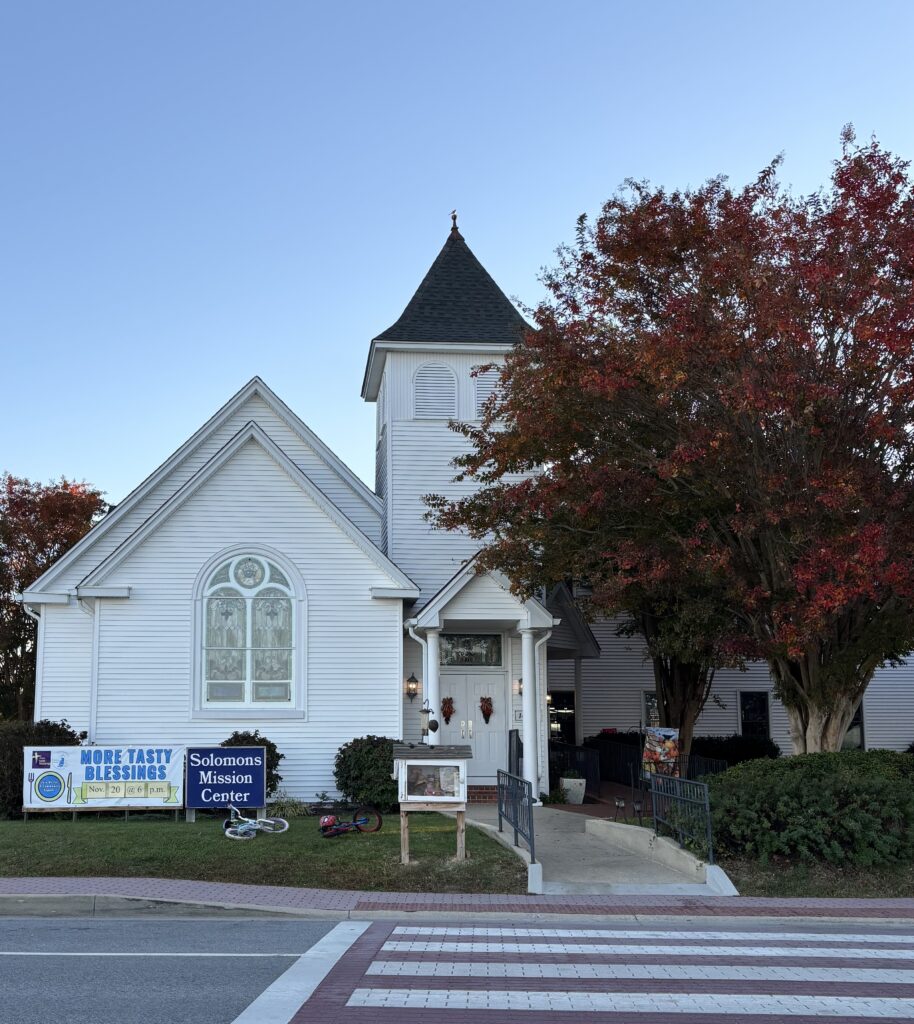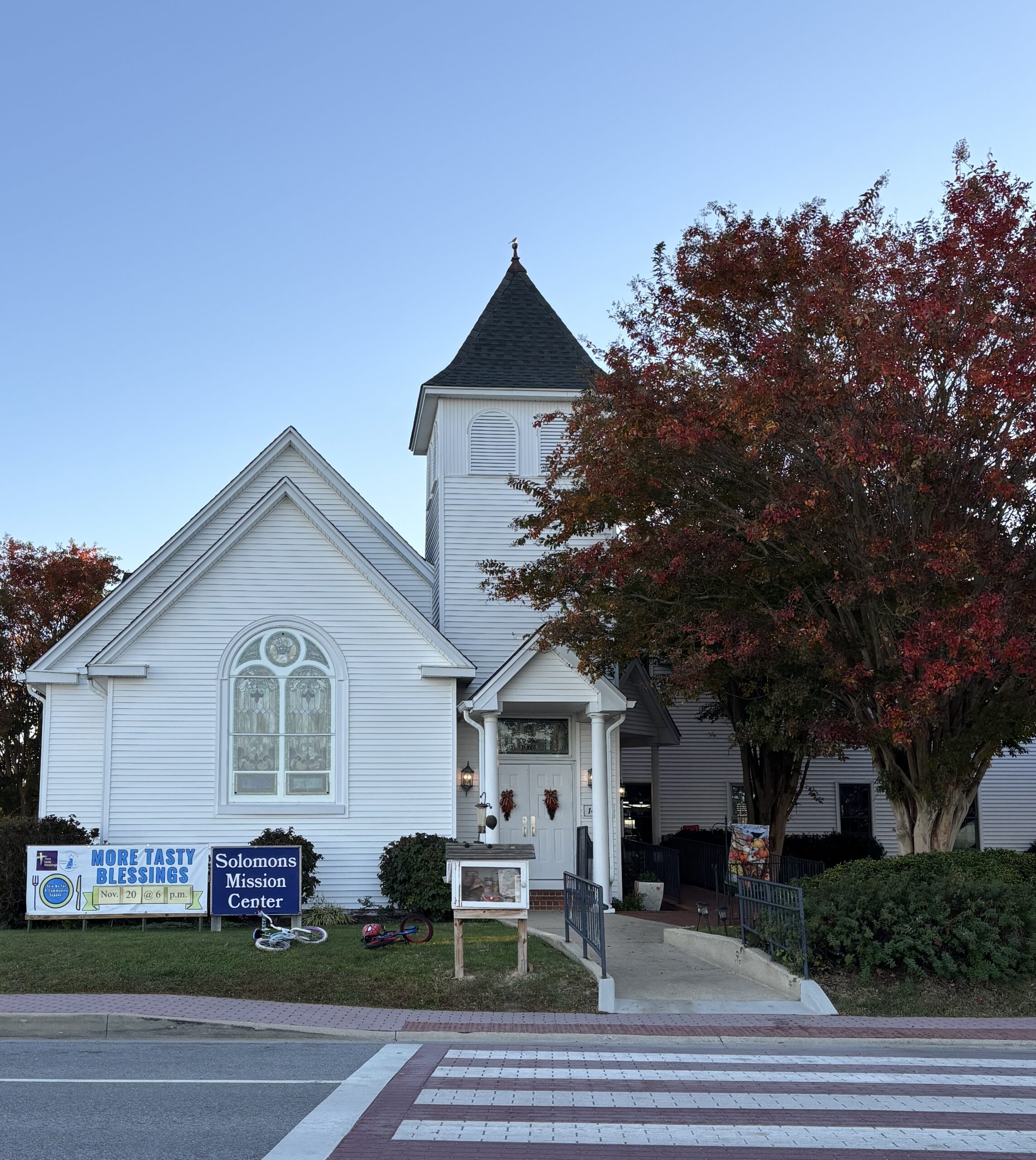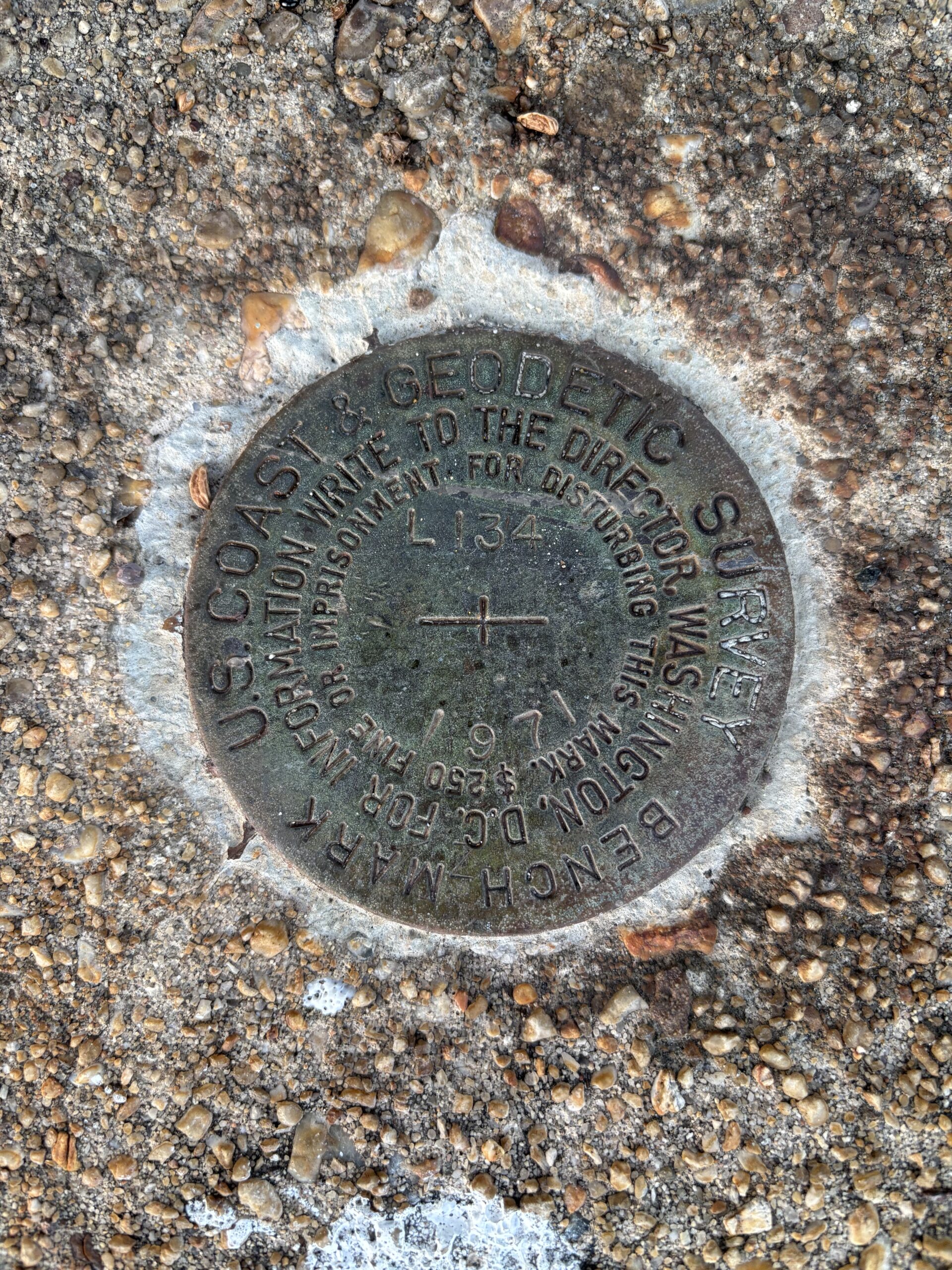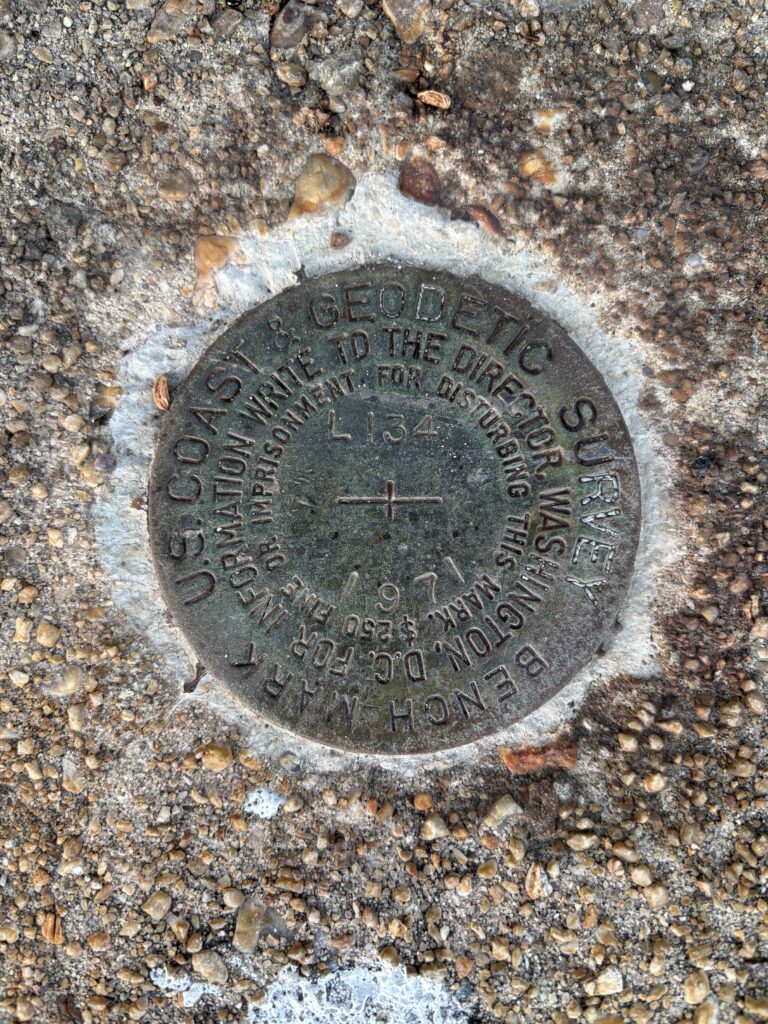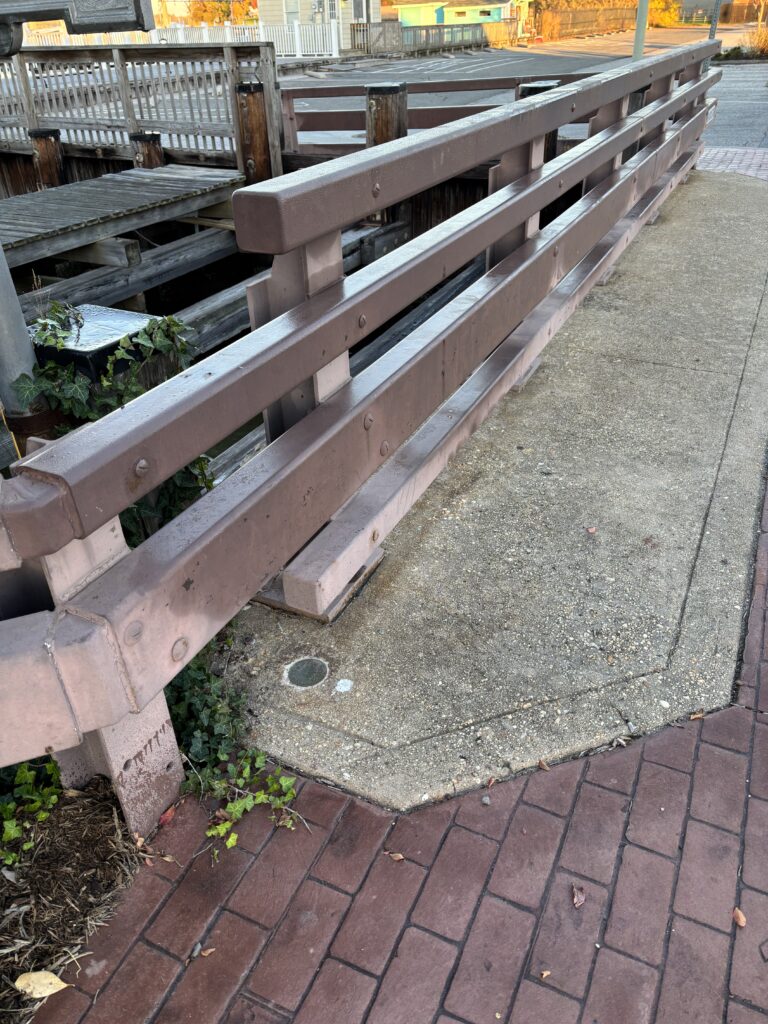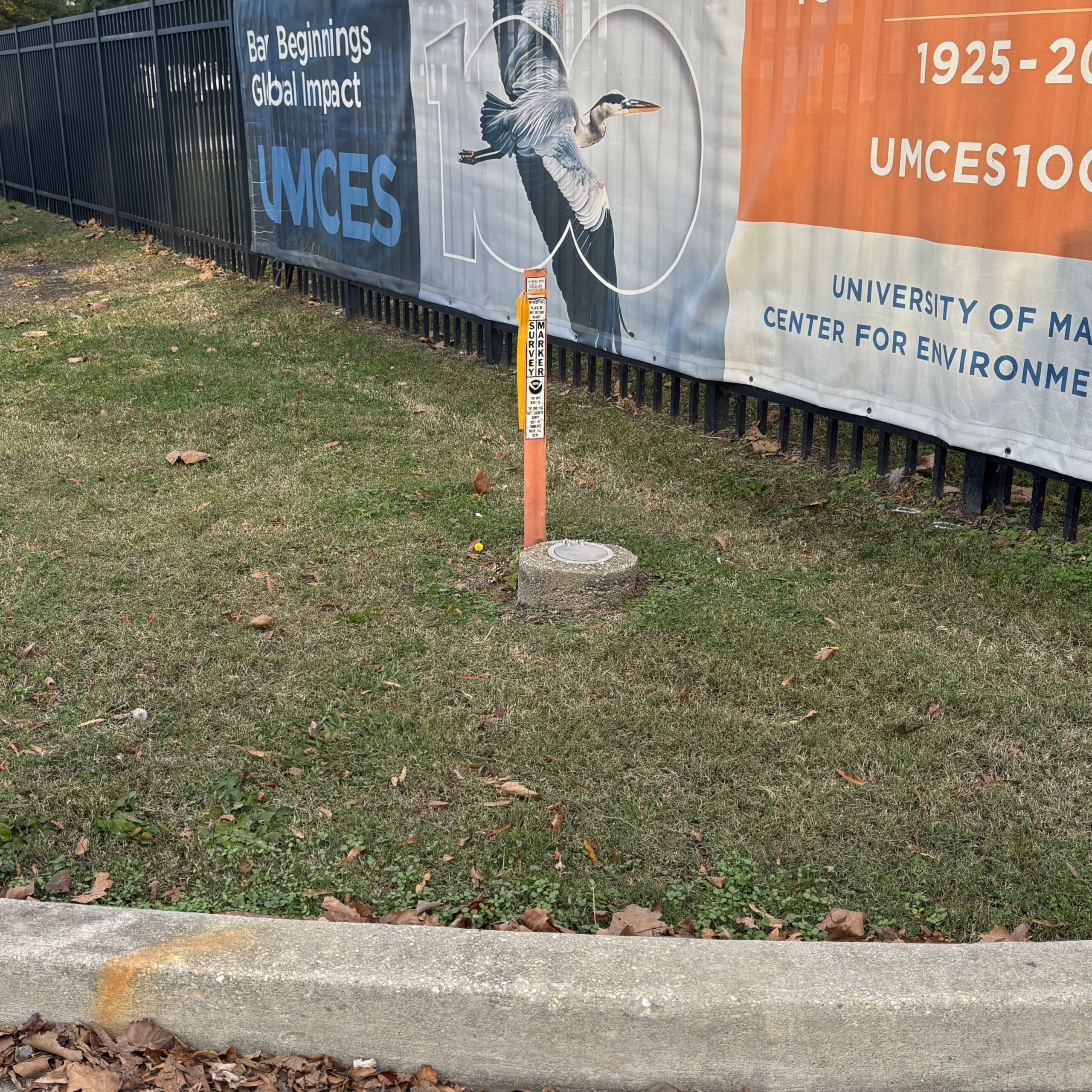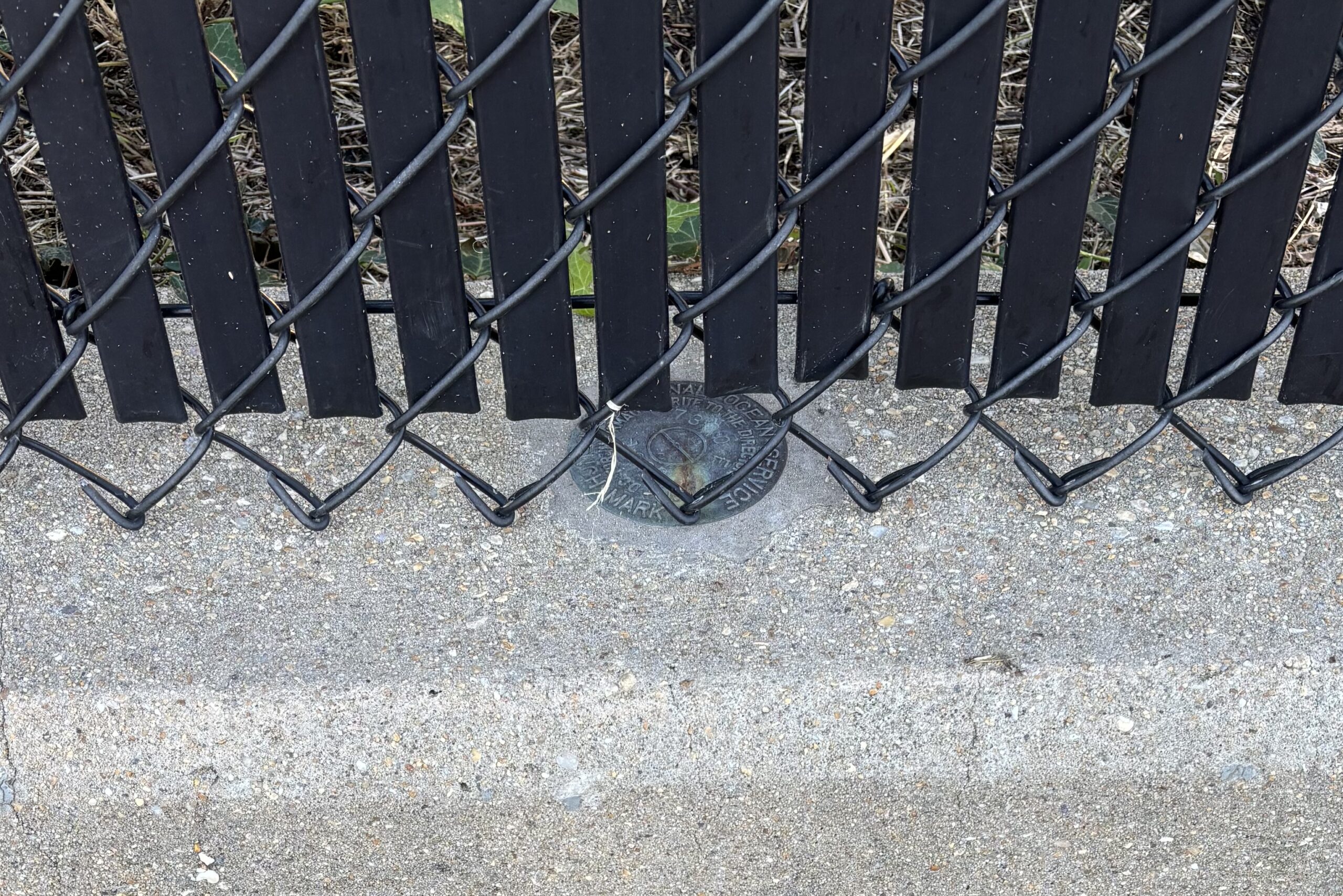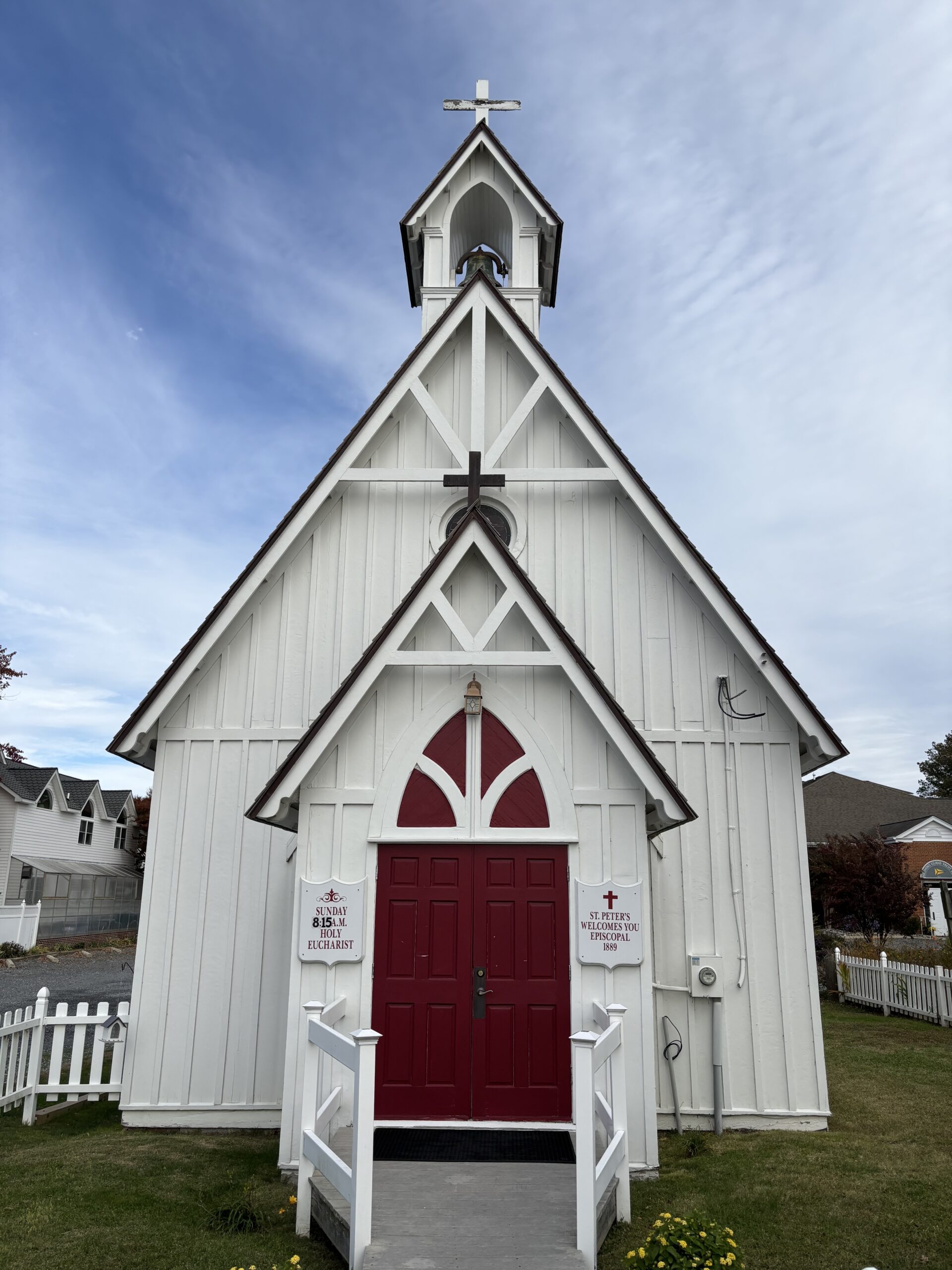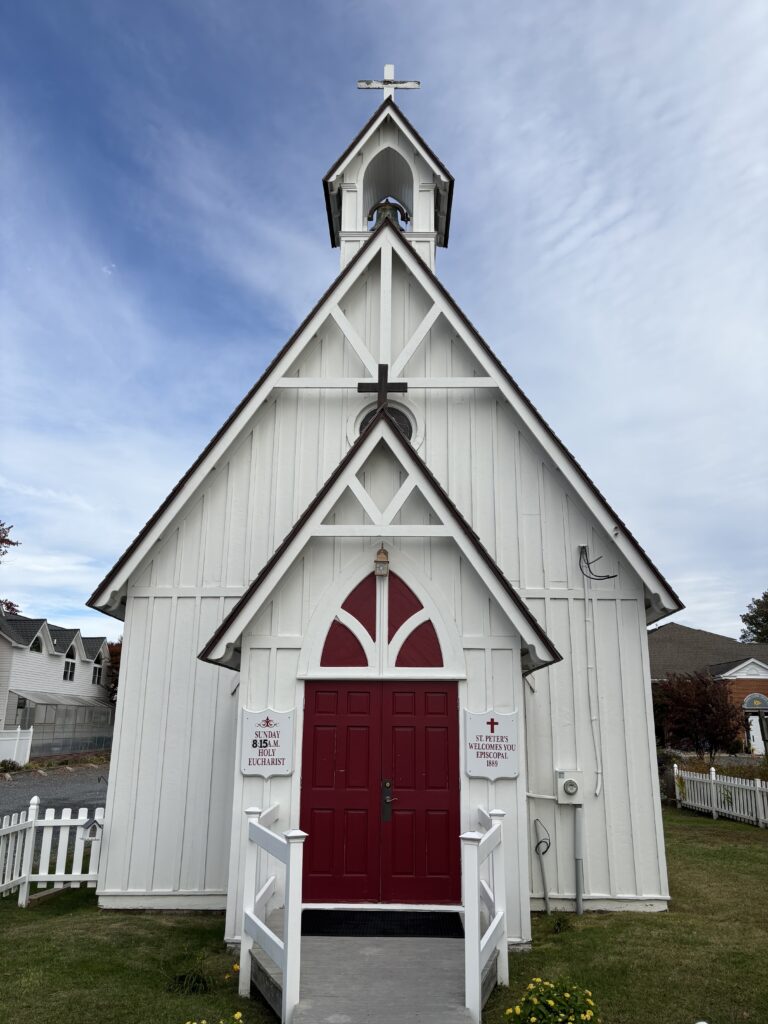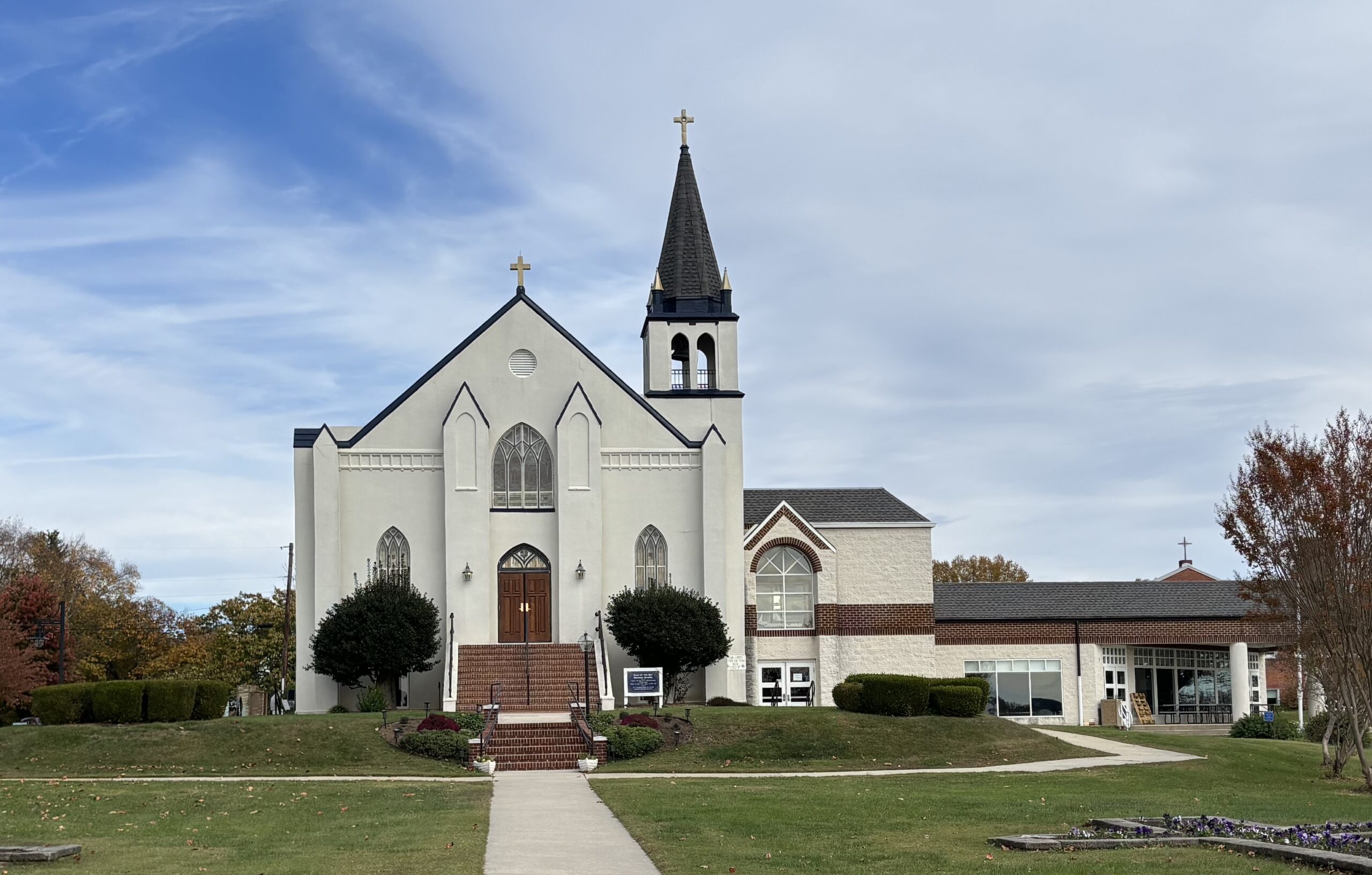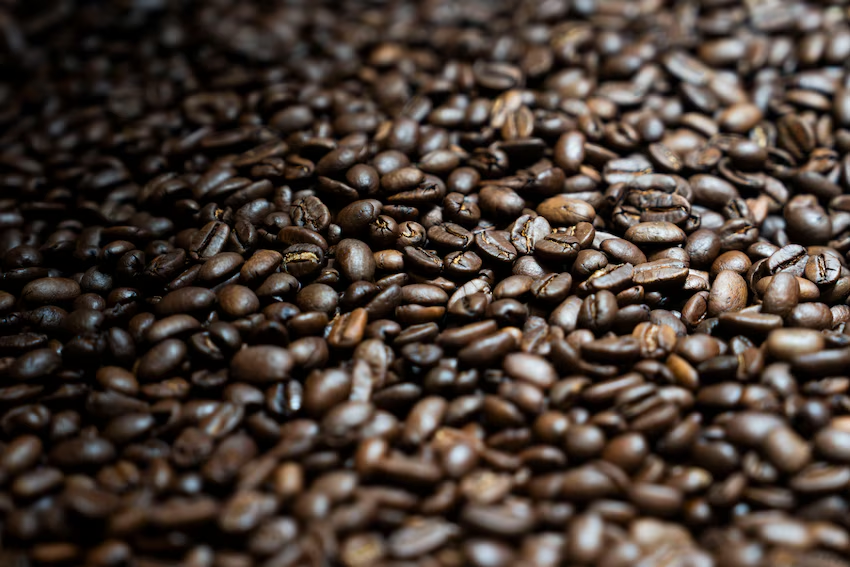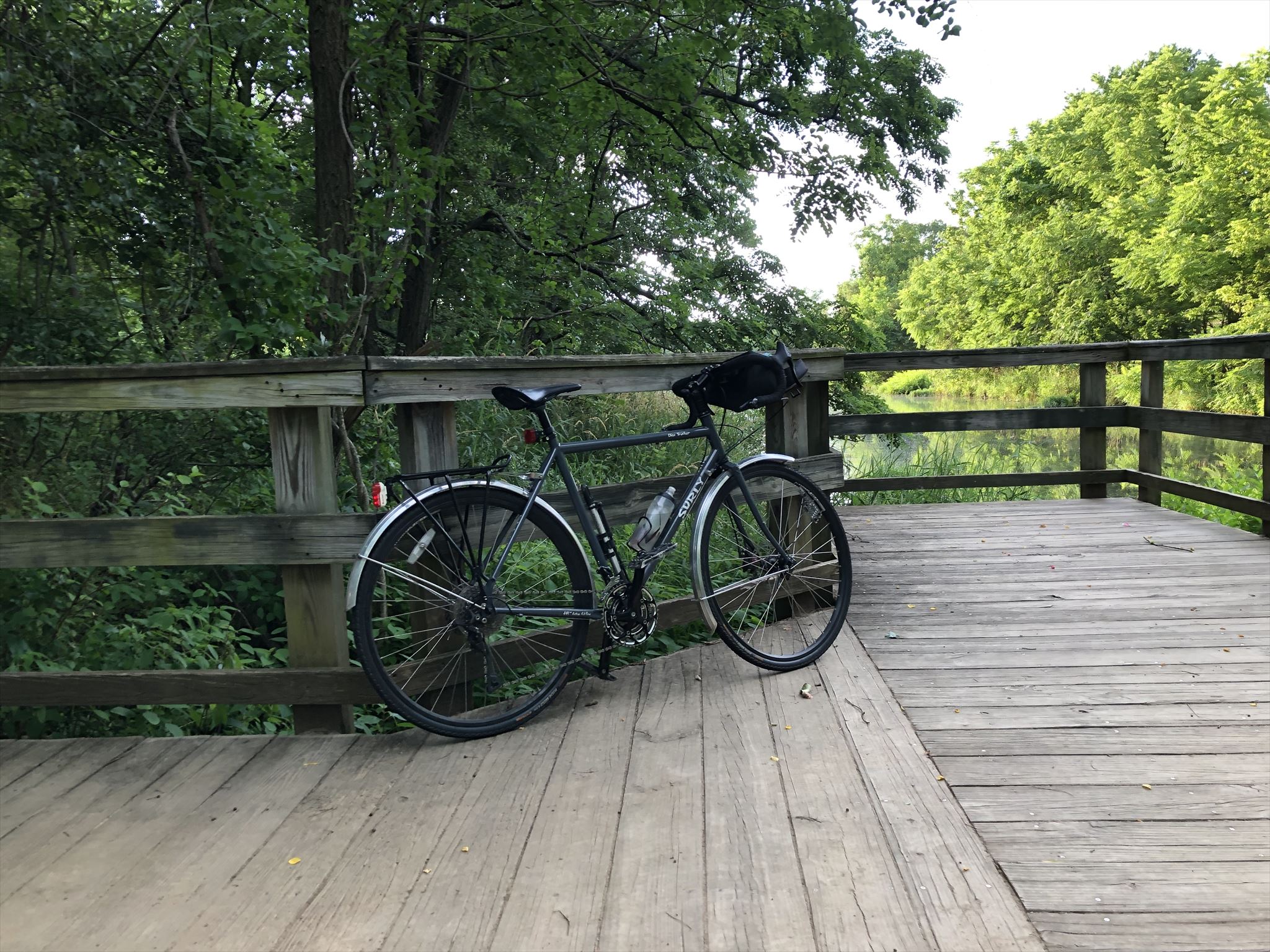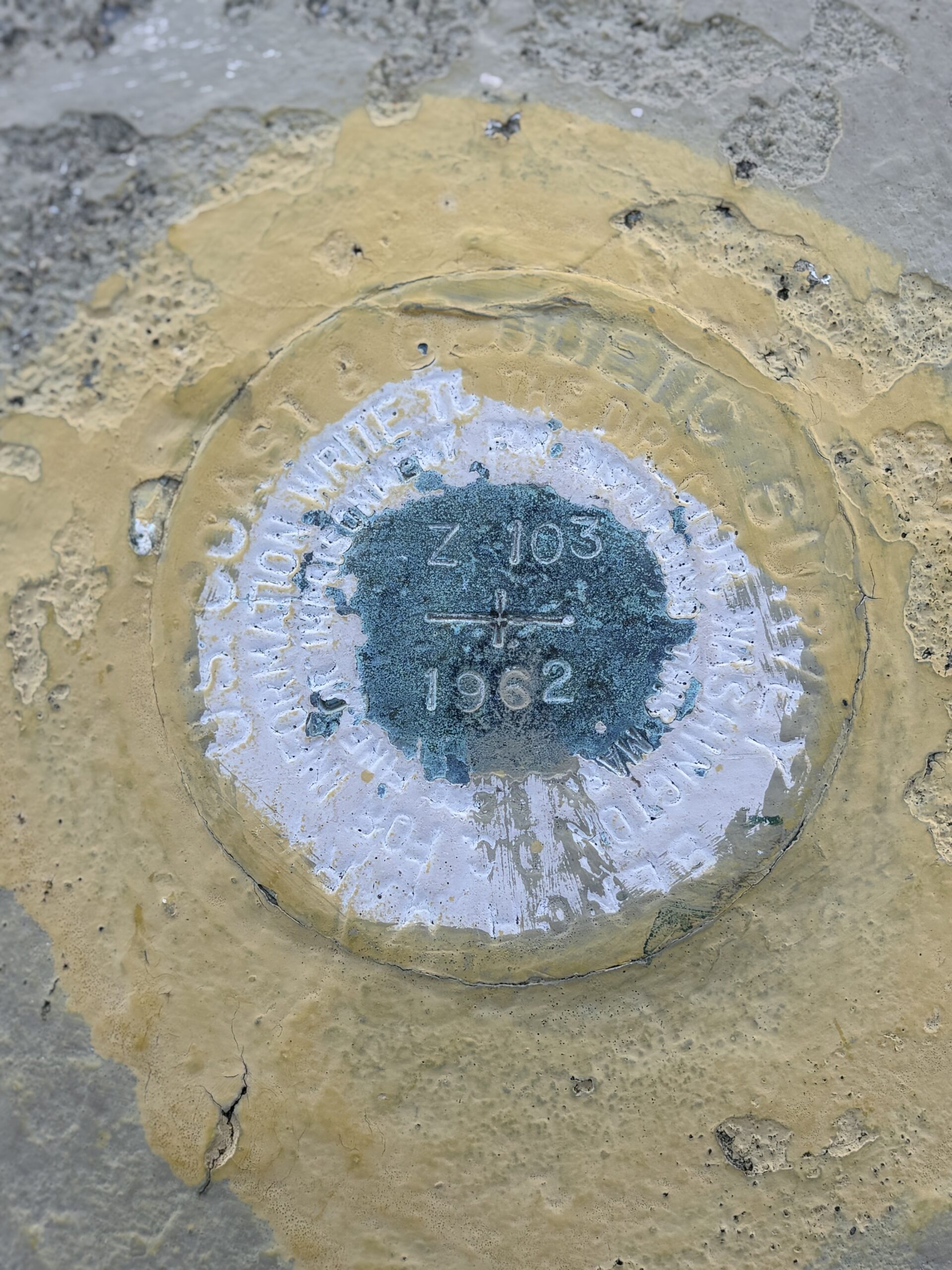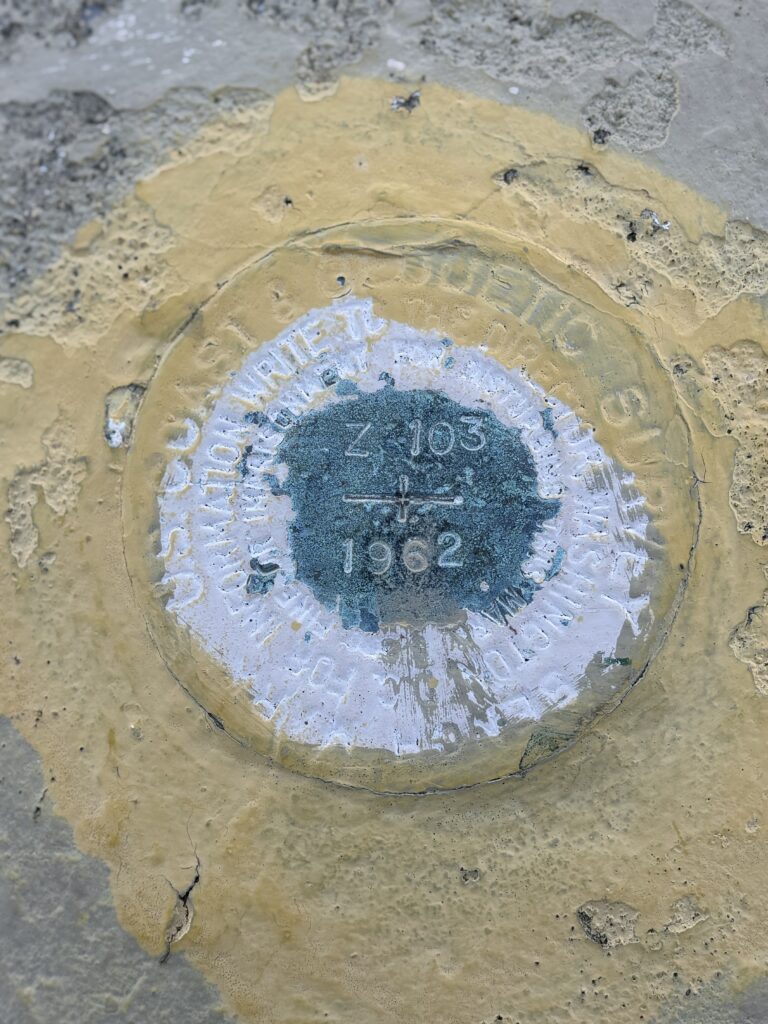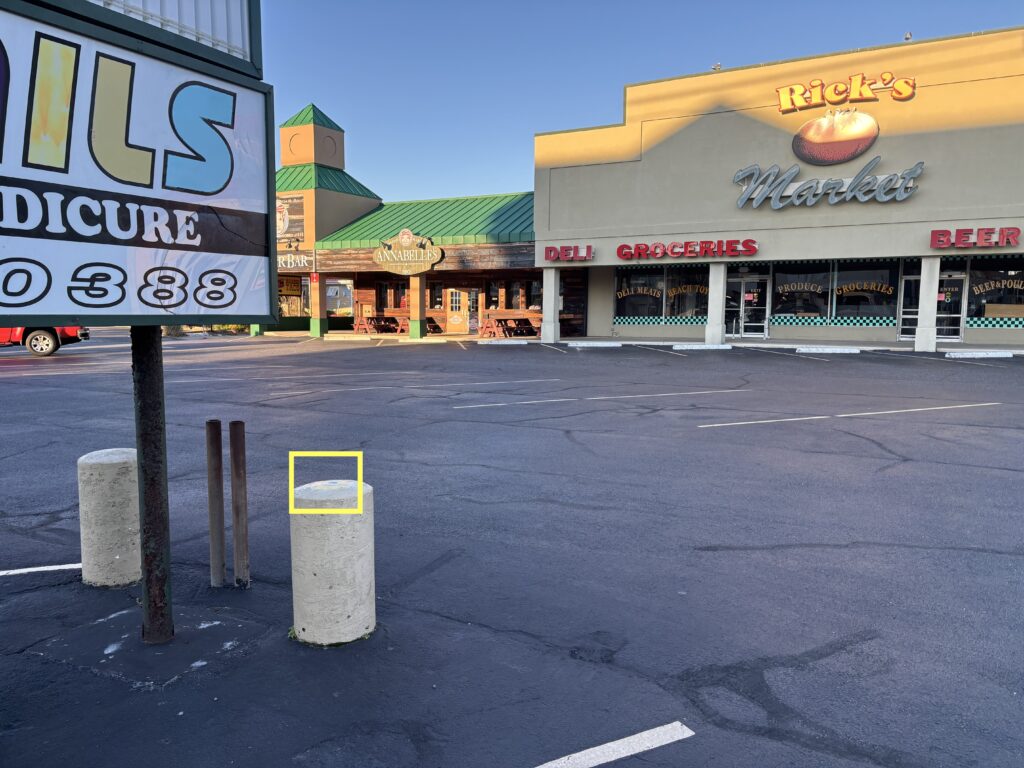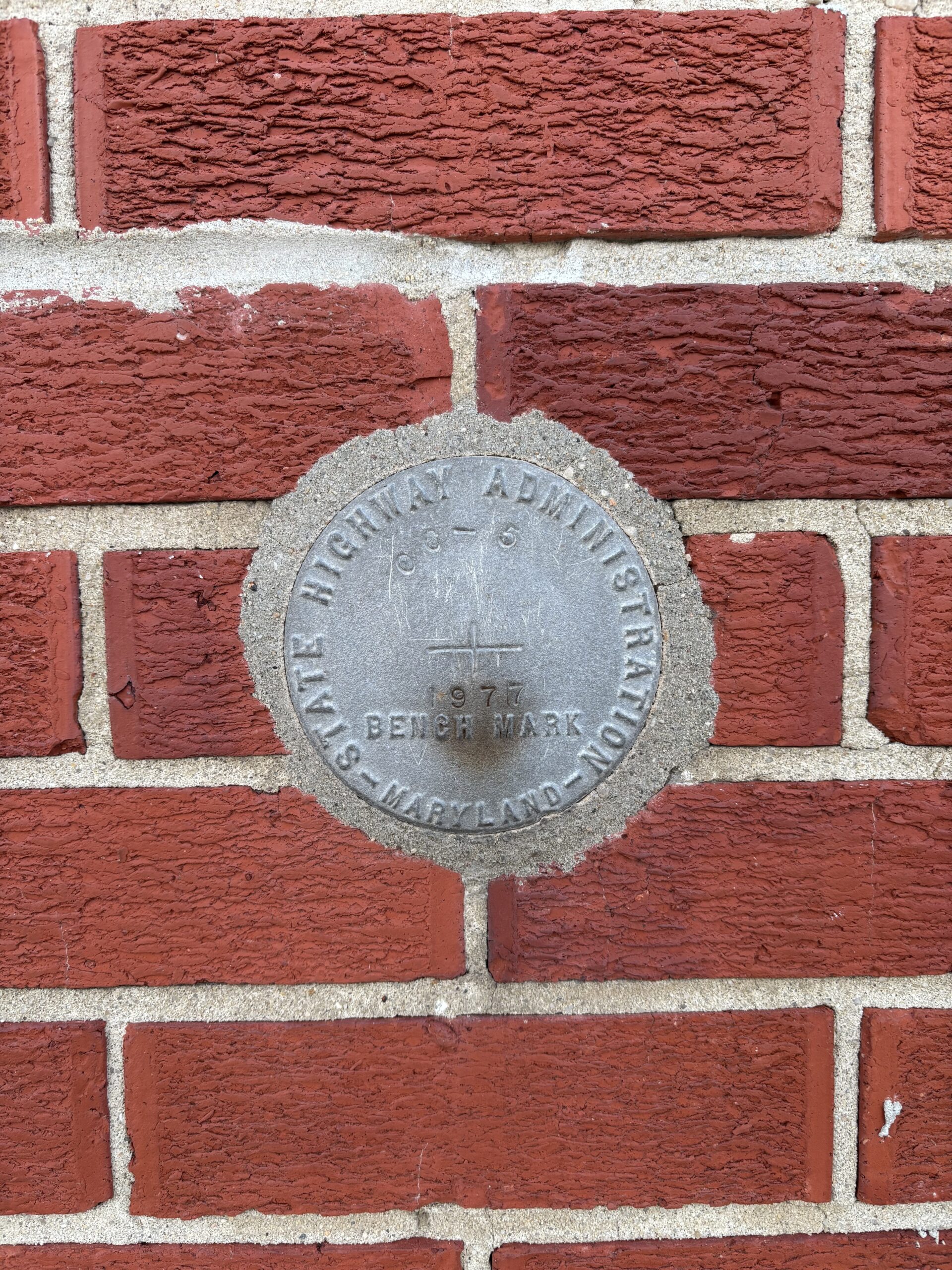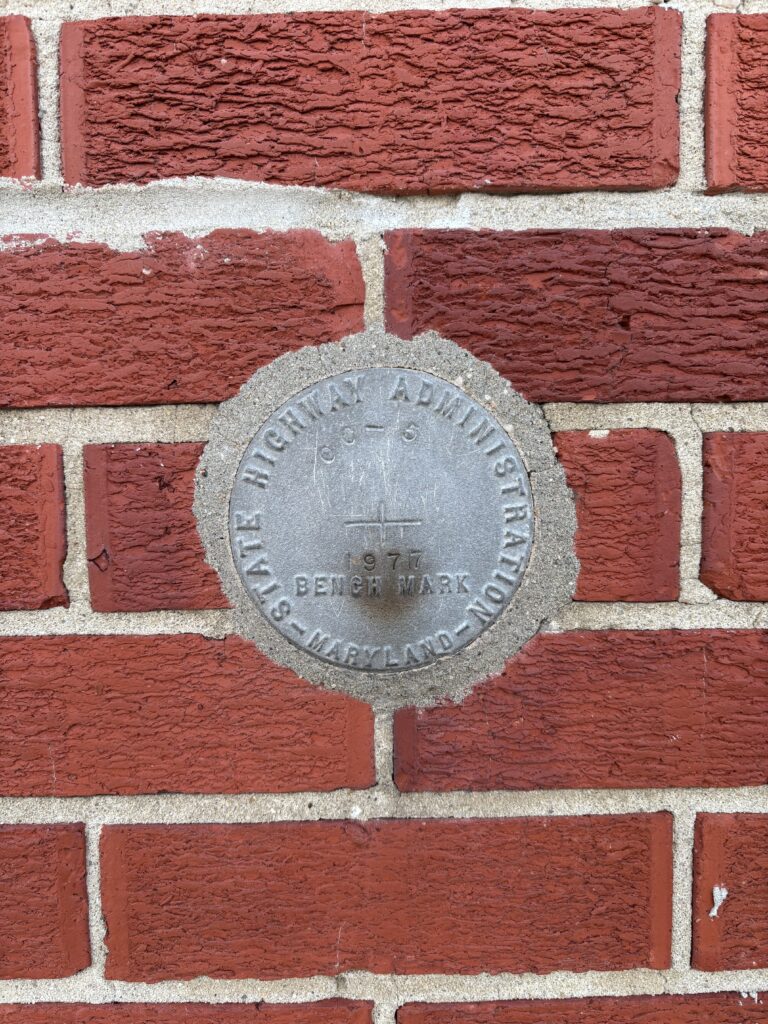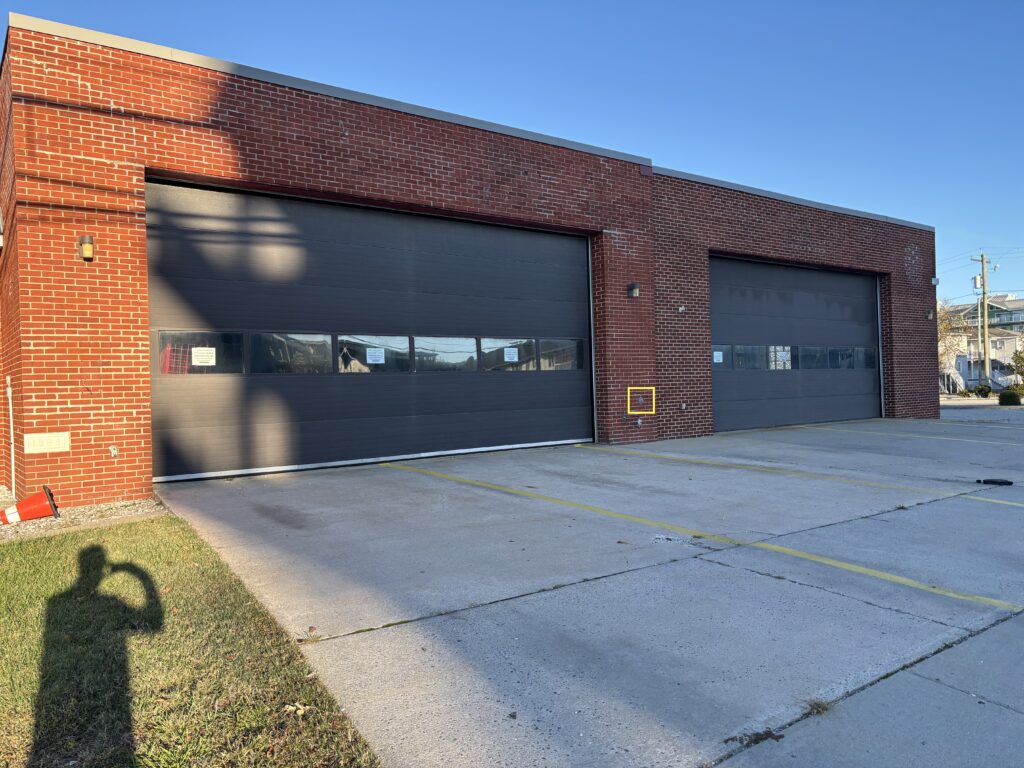1 National Geodetic Survey, Retrieval Date = NOVEMBER 4, 2025 13:57:32 EST
HV6711 ***********************************************************************
HV6711 DESIGNATION - SOLOMONS ISLAND ME CHURCH
HV6711 PID - HV6711
HV6711 STATE/COUNTY- MD/CALVERT
HV6711 COUNTRY - US
HV6711 USGS QUAD - SOLOMONS ISLAND (2016)
HV6711
HV6711 *CURRENT SURVEY CONTROL
HV6711 ______________________________________________________________________
HV6711* NAD 83(1991) POSITION- 38 19 23.52443(N) 076 27 36.26676(W) ADJUSTED
HV6711 ______________________________________________________________________
HV6711 GEOID HEIGHT - -34.381 (meters) GEOID18
HV6711 LAPLACE CORR - -5.15 (seconds) DEFLEC18
HV6711 HORZ ORDER - THIRD
HV6711
HV6711.The horizontal coordinates were established by classical geodetic methods
HV6711.and adjusted by the National Geodetic Survey in January 1992.
HV6711
HV6711.Significant digits in the geoid height do not necessarily reflect accuracy.
HV6711.GEOID18 height accuracy estimate available here.
HV6711
HV6711.Click photographs - Photos may exist for this station.
HV6711
HV6711.The Laplace correction was computed from DEFLEC18 derived deflections.
HV6711
HV6711. The following values were computed from the NAD 83(1991) position.
HV6711
HV6711; North East Units Scale Factor Converg.
HV6711;SPC MD - 73,017.865 447,213.672 MT 0.99999604 +0 20 20.0
HV6711;SPC MD - 239,559.45 1,467,233.52 sFT 0.99999604 +0 20 20.0
HV6711;UTM 18 - 4,242,684.377 372,370.818 MT 0.99980061 -0 54 19.8
HV6711
HV6711_U.S. NATIONAL GRID SPATIAL ADDRESS: 18SUH7237042684(NAD 83)
HV6711
HV6711 SUPERSEDED SURVEY CONTROL
HV6711
HV6711 NAD 83(1986)- 38 19 23.52424(N) 076 27 36.28172(W) AD( ) 3
HV6711 NAD 27 - 38 19 23.07600(N) 076 27 37.44000(W) AD( ) 3
HV6711 USSD - 38 19 23.44900(N) 076 27 37.20100(W) AD( ) 3
HV6711
HV6711.Superseded values are not recommended for survey control.
HV6711
HV6711.NGS no longer adjusts projects to the NAD 27 or NGVD 29 datums.
HV6711.See file dsdata.pdf to determine how the superseded data were derived.
HV6711
HV6711_SATELLITE: THE SITE LOCATION WAS REPORTED AS SUITABLE FOR
HV6711+SATELLITE: SATELLITE OBSERVATIONS - July 31, 2011
HV6711
HV6711 HISTORY - Date Condition Report By
HV6711 HISTORY - 1907 FIRST OBSERVED CGS
HV6711 HISTORY - 1960 GOOD CGS
HV6711 HISTORY - 20050726 GOOD USPSQD
HV6711 HISTORY - 20060923 GOOD USPSQD
HV6711 HISTORY - 20110731 GOOD GEOCAC
HV6711
HV6711 STATION DESCRIPTION
HV6711
HV6711'DESCRIBED BY COAST AND GEODETIC SURVEY 1907 (OWF)
HV6711'STATION IS ON THE NORTHEASTERN SHORE OF PATUXENT RIVER, ON UPPER
HV6711'END OF SOLOMONS ISLAND, ON PATUXENT AVENUE, NEAR BEGINNING OF
HV6711'CAUSEWAY TO MAINLAND. STATION IS TIP OF PYRAMIDAL TOWER ON
HV6711'METHODIST CHURCH.
HV6711
HV6711 STATION RECOVERY (1960)
HV6711
HV6711'RECOVERY NOTE BY COAST AND GEODETIC SURVEY 1960 (LFB)
HV6711'STATION RECOVERED. THE PUBLISHED DESCRIPTION IS ADEQUATE.
HV6711
HV6711 STATION RECOVERY (2005)
HV6711
HV6711'RECOVERY NOTE BY US POWER SQUADRON 2005 (BRE)
HV6711'AS DESCRIBED
HV6711
HV6711 STATION RECOVERY (2006)
HV6711
HV6711'RECOVERY NOTE BY US POWER SQUADRON 2006 (JCH)
HV6711'RECOVERED IN GOOD CONDITION.
HV6711
HV6711 STATION RECOVERY (2011)
HV6711
HV6711'RECOVERY NOTE BY GEOCACHING 2011 (DPB)
HV6711'RECOVERED IN GOOD CONDITION.
Log: Recovered on Wednesday, 11/5/2025 at 7:07am. Based on what I found online, it seems that the Methodist Church, which was founded around 1866, closed its doors in 2021. It now operates as the Solomons Mission Center, a food pantry. The building itself seems to be in pretty good shape. In the photo, there is a bird perched on top of the station.
